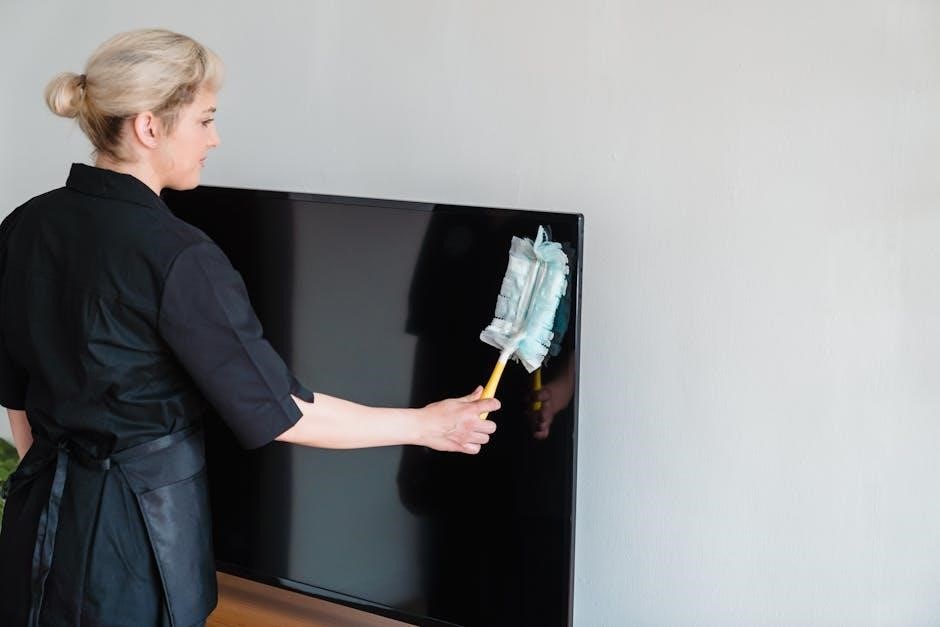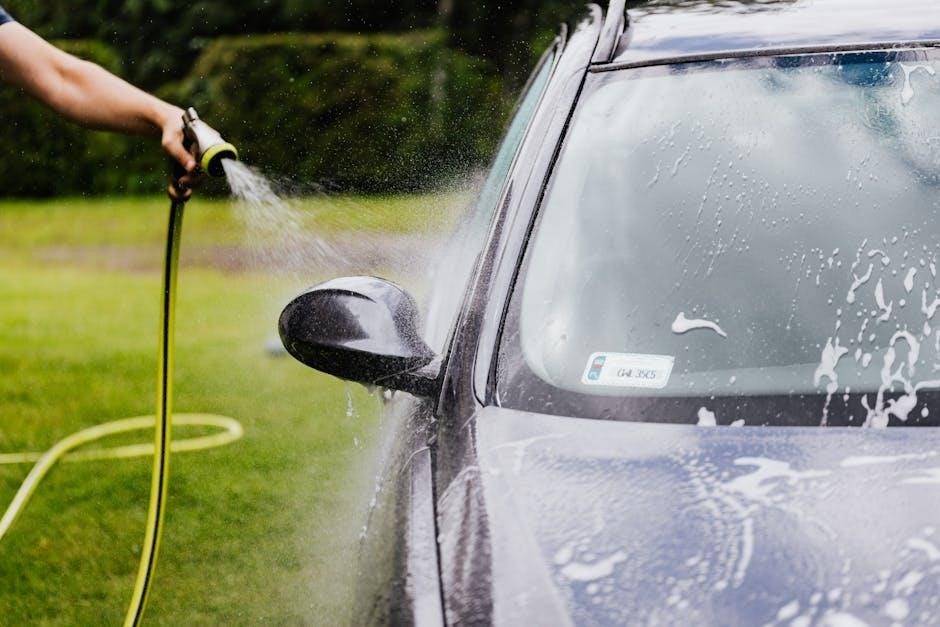Overview of Carrier 30RB Series Chillers
The Carrier 30RB series chillers are air-cooled liquid chillers designed for commercial and industrial applications. These chillers offer efficient cooling and are known for their ease of installation and maintenance, ensuring reliable operation.
Key Features and Benefits
The Carrier 30RB series chillers boast several key features that contribute to their superior performance and operational advantages. One significant benefit is the utilization of two self-contained refrigerant circuits. In the event of a fault in one circuit, the other automatically takes over, ensuring continuous, albeit partial, cooling; This redundancy minimizes downtime and maintains critical cooling functions.
Another notable feature is the accessibility of compressor components, which simplifies on-site maintenance and reduces downtime. The all-aluminum Novation TM micro-channel heat exchanger (MCHE) further enhances efficiency and durability. These chillers are designed to meet stringent industry standards, aligning with ISO 14001 production plant requirements. They are an effective all-in-one package, easy to install, operate quietly, and provide efficient cooling.

Installation Instructions for Carrier 30RB Chillers
Proper installation is crucial for optimal performance. Refer to the Carrier 30RB series installation manual for detailed instructions, including unit dimensions, clearances, and specific connection requirements, ensuring a smooth setup process.
Preliminary Checks and Site Requirements
Before installing the Carrier 30RB chiller, conduct preliminary checks to ensure the site meets all requirements. Verify that the unit’s dimensions and clearances comply with the specifications in the installation manual. Ensure the installation site has adequate space for maintenance. Check the structural integrity of the installation surface to support the chiller’s weight.
Confirm the availability of necessary electrical and water connections, adhering to local codes and standards. Inspect the unit for any shipping damage, reporting discrepancies immediately. Ensure proper ventilation around the chiller to prevent overheating and maintain optimal performance. Verify that the power supply matches the chiller’s voltage and frequency requirements. Confirm environmental conditions meet operating specifications.
These preliminary checks are vital for a successful installation and to avoid future operational issues, ensuring the longevity and efficiency of the Carrier 30RB chiller.
Electrical and Water Connections
Proper electrical and water connections are essential for the safe and efficient operation of the Carrier 30RB chiller. All electrical work must be performed by qualified personnel, adhering to local electrical codes. Verify the correct voltage and phase requirements before connecting the power supply. Use appropriately sized wiring and conduit to handle the chiller’s electrical load, preventing overheating and potential hazards. Ensure a dedicated circuit breaker is installed for the chiller.
For water connections, use properly sized piping to ensure adequate flow. Flush the water lines to remove debris before connecting them to the chiller. Install shut-off valves to isolate the chiller for maintenance. Verify water quality meets the chiller’s specifications to prevent scaling and corrosion. Insulate water lines to minimize heat loss or gain.
Following these guidelines for electrical and water connections ensures reliable and safe operation of the Carrier 30RB chiller.

Operation of Carrier 30RB Chillers
Operating the Carrier 30RB chillers involves understanding the control panel, start-up, and shutdown procedures. Proper operation ensures efficient cooling and prolongs the chiller’s lifespan, adhering to manufacturer’s guidelines for optimal performance.
Control Panel and User Interface
The Carrier 30RB chiller’s control panel is designed for user-friendly operation and monitoring of the system’s performance. The interface typically includes a display screen that provides real-time data on various parameters, such as temperature, pressure, and operating status. Users can navigate through menus to access settings, view alarm history, and adjust operational modes.
The control panel allows for precise control over the chiller’s functions, enabling users to optimize performance based on specific cooling requirements. It often features password protection to prevent unauthorized access and modifications. The user interface is designed to provide clear and concise information, making it easy for operators to understand the chiller’s current state and make necessary adjustments.
The Carrier Comfort Network (CCN) integration allows for remote monitoring and control, enhancing operational flexibility. Understanding the control panel layout and functionality is crucial for efficient and safe operation of the 30RB chiller.
Start-up and Shutdown Procedures
Proper start-up and shutdown procedures are critical for the longevity and efficient operation of the Carrier 30RB chiller. Before starting the unit, verify that all electrical and water connections are secure and that the system is properly charged with refrigerant. Ensure that all safety devices are functioning correctly and that there are no obstructions around the unit.
To start the chiller, follow the sequence outlined in the service manual, typically involving powering on the control panel, enabling the cooling circuit, and monitoring the system parameters as it reaches its operational state. For shutdown, gradually reduce the load and follow the prescribed steps to power down the unit, ensuring proper drainage and protection against freezing in cold weather.
Adhering to these procedures minimizes stress on the components and prevents potential damage, ensuring reliable and efficient performance. Always consult the Carrier 30RB service manual for specific instructions related to your model.
Maintenance of Carrier 30RB Chillers
Regular maintenance is crucial for the optimal performance and longevity of Carrier 30RB chillers. Consistent upkeep prevents breakdowns, ensures efficiency, and extends the chiller’s operational life.
Routine Maintenance Tasks
Routine maintenance of Carrier 30RB chillers involves several key tasks to ensure optimal performance and prevent costly breakdowns. These tasks should be performed regularly, as outlined in the service manual, to maintain the chiller’s efficiency and extend its lifespan.
First, inspect the condenser coils for any debris, leaves, or dirt accumulation. Clean the coils using a soft brush or low-pressure water spray to ensure proper airflow and heat transfer. Next, check the refrigerant levels and pressures, comparing them to the specifications in the manual. Address any leaks promptly by a qualified technician.
Additionally, inspect electrical connections for tightness and signs of corrosion. Verify the proper operation of all fans, pumps, and motors, lubricating as needed. Regularly monitor the chiller’s performance, noting any unusual noises or vibrations that may indicate underlying issues. Finally, keep a detailed record of all maintenance activities performed.
Troubleshooting Common Issues
Troubleshooting common issues in Carrier 30RB chillers requires a systematic approach, utilizing the service manual as a guide. Begin by identifying the specific problem, noting any unusual symptoms or alarm codes displayed on the control panel. Common issues include insufficient cooling, high pressure, low pressure, and compressor failures.
For insufficient cooling, check the refrigerant levels, condenser coil cleanliness, and water flow rates. High-pressure issues may stem from dirty condenser coils, non-condensables in the refrigerant, or a faulty expansion valve. Low-pressure problems can arise from refrigerant leaks, a restricted filter drier, or low refrigerant charge.
Compressor failures may require professional diagnosis and repair. When troubleshooting, always follow safety precautions and consult the service manual for detailed procedures and component specifications. Document all troubleshooting steps and findings for future reference. If the issue persists, contact qualified Carrier maintenance personnel for assistance.

Alarm Codes and Troubleshooting
The Carrier 30RB chiller series utilizes alarm codes to indicate system malfunctions. Understanding these codes is crucial for effective troubleshooting and prompt resolution of operational issues, ensuring minimal downtime.
Alarm Code Descriptions and Resetting
The Carrier 30RB chiller’s control system displays alarm codes that signal specific issues within the unit. These codes range from sensor faults to pressure transducer malfunctions and communication errors, each requiring a unique approach. Proper identification of the alarm code is the first step in effective troubleshooting. Descriptions of each code are detailed in the service manual, providing technicians with the necessary information to understand the nature of the problem.
Resetting procedures vary depending on the alarm type. Some alarms can be reset directly from the control panel after the underlying issue has been resolved. Other alarms may require a power cycle or more in-depth service intervention; Consulting the Carrier 30RB service manual is essential for understanding the specific resetting procedure associated with each alarm code, ensuring correct and safe operation. Remember that persistent alarms may indicate a more serious underlying problem, necessitating professional service.
Probable Causes and Solutions for Alarms
When a Carrier 30RB chiller displays an alarm code, identifying the probable cause is crucial for implementing the correct solution. The service manual offers a comprehensive list of potential causes associated with each alarm, ranging from simple sensor failures to more complex issues like refrigerant leaks or compressor malfunctions. For instance, a high-pressure alarm could indicate a blocked condenser coil, while a low-pressure alarm might suggest a refrigerant shortage.
The solutions outlined in the manual vary depending on the cause. Some issues can be resolved with simple maintenance tasks, such as cleaning coils or replacing filters. Others may require more specialized repairs, like replacing faulty sensors or repairing refrigerant leaks. Always consult the Carrier 30RB service manual for detailed troubleshooting steps and safety precautions before attempting any repairs. Ignoring alarms or attempting incorrect solutions can lead to further damage and increased downtime. If unsure, seek assistance from qualified Carrier service personnel.

Refrigerant Servicing and Safety
Refrigerant servicing of Carrier 30RB chillers requires adherence to strict safety protocols. Proper handling procedures are essential to prevent environmental damage and ensure the safety of service personnel.
Refrigerant Handling Procedures
When servicing Carrier 30RB series chillers, proper refrigerant handling is paramount. Technicians must be qualified and certified to handle refrigerants, following all regulatory guidelines. Before commencing any refrigerant-related task, ensure the system is properly isolated and depressurized. Use recovery equipment to remove the refrigerant, preventing its release into the atmosphere, which adheres to environmental regulations.
Always utilize the correct type of refrigerant specified for the 30RB model, avoiding mixing different refrigerants. During charging, introduce refrigerant slowly, monitoring pressure levels to prevent overcharging. After completing the service, thoroughly check for leaks using appropriate leak detection methods. Document all refrigerant handling activities, including the amount recovered, charged, and any leaks found. Proper record-keeping is crucial for regulatory compliance and tracking refrigerant usage. Store refrigerant cylinders in a secure, well-ventilated area away from heat sources.
Safety Precautions and Considerations
Servicing Carrier 30RB chillers demands strict adherence to safety protocols. Prior to any work, disconnect power to the unit and verify isolation; Wear appropriate personal protective equipment (PPE), including safety glasses, gloves, and hearing protection. Be mindful of electrical hazards and ensure proper grounding. Work in well-ventilated areas to avoid refrigerant exposure, which can cause asphyxiation.
Never exceed the chiller’s pressure limits, as over-pressurization can lead to equipment failure or injury. When handling refrigerants, avoid open flames or sparks. Use only approved tools and equipment. Securely support heavy components during removal or installation to prevent accidents. Be aware of hot surfaces and moving parts. Clearly label lockout/tagout procedures to prevent unintended start-up during maintenance. Dispose of used refrigerant and components responsibly, following environmental regulations. If any abnormalities are detected, stop work immediately and investigate the cause.


